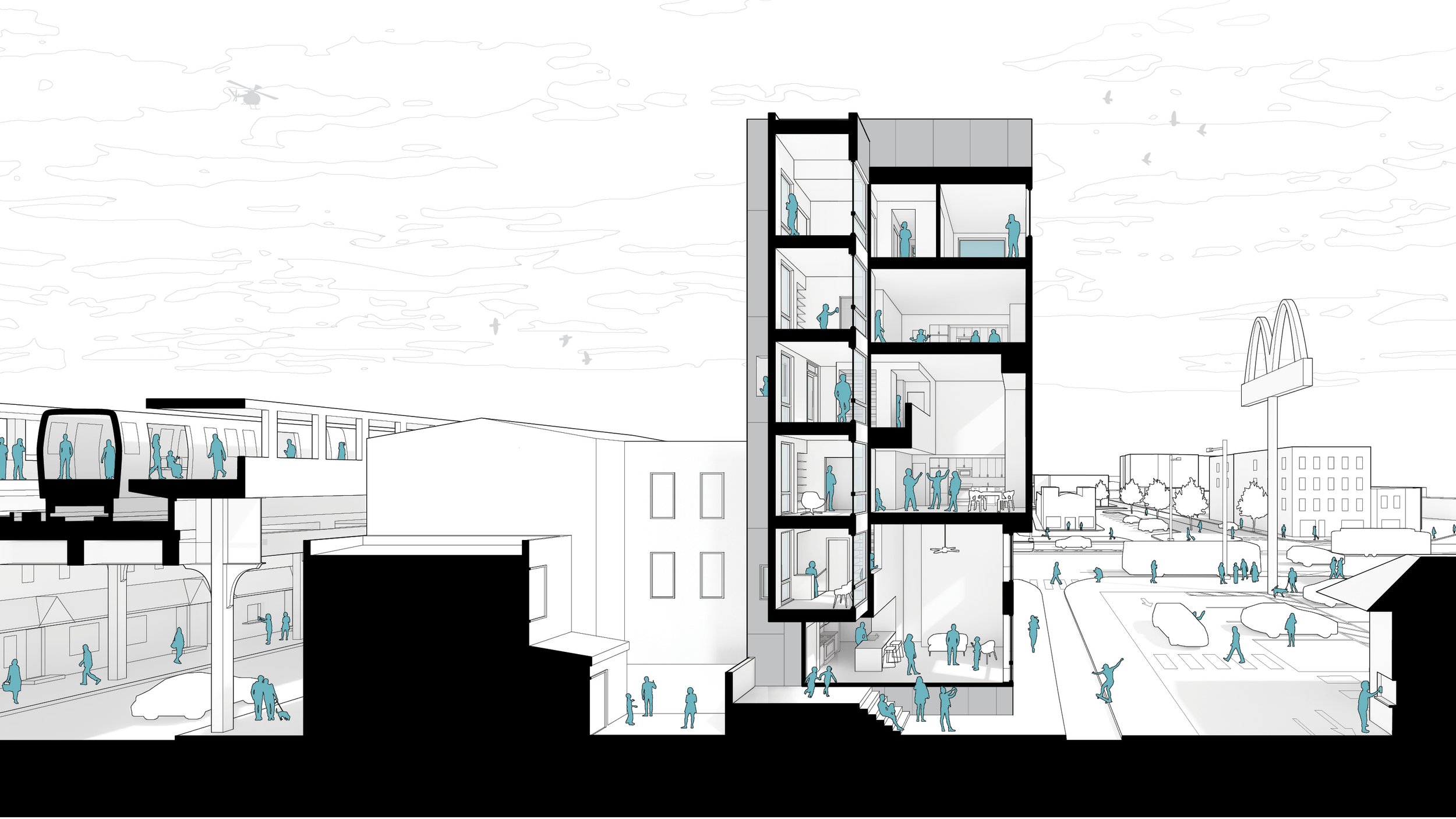Signal House
2023 / Philadelphia PA
GOING VERTICAL
Signal House is a missing middle prototype addressing the nation’s shortage of attainable urban housing. The single-stair, walk-up infill building, located less than a block from a key transit hub in Philadelphia’s Fishtown neighborhood, fits three units on a modest lot that would more typically be slated for use as a single-family rowhome. An interlocking organization incorporates mezzanine levels and bi-level unit layouts, going vertical as a way to add square footage and livability as well as light, air and views on an otherwise landlocked parcel.
OVER THE TOP
The building’s broader urban context includes a boisterous mix of elevated rail infrastructure, industrial buildings, late-night bars and restaurants, and busy arterial streets. Situated in this visually and sonically loud context, Signal House forms a camouflaged beacon, assertively addressing its surroundings with opaque, industrial black metal cladding rising nearly 70 feet tall, well above its three-story domestically scaled neighbors. Its white window slots and bright turquoise highlights create unique glowing portals in the evening, drawing attention and generating a sense of interest and mystery from passersby. Openings are stacked within a playful series of multi-story slots along the vertical seams between massing projections, setback from internal property lines and washing room interiors with daylight at inner corners. This window organization creates a series of edited views that emphasize urban streets and sky vistas rather than immediately adjacent nearby structures, acting almost like framed artwork.
MORE SPACE, MORE PEOPLE
The building’s single-stair, walk-up typology is designed to maximize habitable space on its small, transit-adjacent site. Instead of placing a luxury rowhouse for a single family on the lot, the client – a local housing developer and builder looking to add value across a series of small parcels – elected to create three multi-level units sized to accommodate families or cohabitating singles. Within its three units, the building provides a total of eight private and semi-private rooms for singles, couples or families to sleep and work, creating dwelling opportunities for many more people than a single-family home. The building’s larger yet tightly organized unit layouts allow residents to share common space and infrastructure while maintaining privacy, making for an efficient and replicable model for high-density urban housing.















